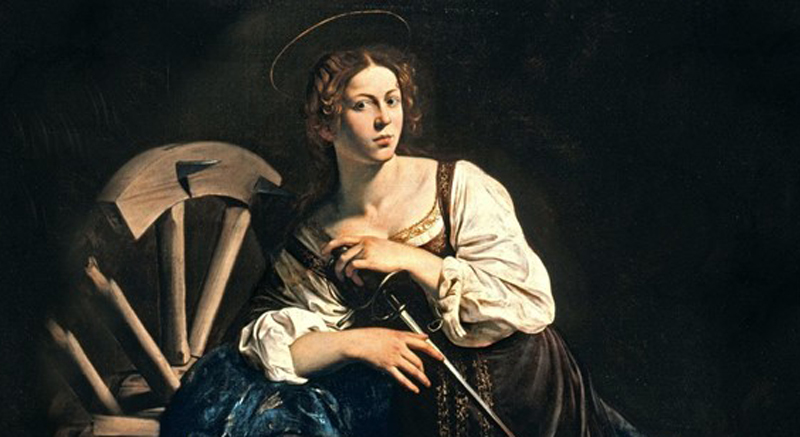(287-305)
St. Catherine was born in Alexandria, Egypt, one of the finest cities in the world, and a center of learning and culture as well as faith in that period.
Christian tradition states she was of noble birth, possibly a princess. As a member of the nobility, she was also educated and was an avid scholar. Around the age of fourteen, she experienced a moving vision of Mary and the infant Jesus, and she decided to become a Christian.
When the emperor Maxentius began persecuting Christians, Catherine visited him to denounce his cruelty. Rather than order her execution, Maxentius summoned 50 orators and philosophers to debate her. Catherine was moved by the power of the Holy Spirit and spoke eloquently in defense of her faith. Her words were so moving that several of the pagans converted to Christianity and were immediately executed.
Unable to defeat her rhetorically or to intimidate her into giving up her belief, the emperor ordered her to be tortured and imprisoned. Catherine was arrested and scourged. Despite the torture, she did not abandon her faith.
Word of her arrest and the power of her faith quickly spread and more than 200 people visited her. According to some legends, the emperor’s wife, Valeria Maximilla, was converted by Catherine. The emperor eventually executed his wife over her conversion. This is not mentioned in the historical record, however, and may be a legend. It is believed that Maximilla was alive and with her husband at the Battle of the Milvian Bridge in 312, seven years after the death of Catherina.
Following her imprisonment, Maxentius made a final attempt to persuade the beautiful Catherine to abandon her faith by proposing marriage to her. This would have made her a powerful empress. Catherine refused, saying she was married to Jesus Christ and that her virginity was dedicated to him. The emperor angrily ordered her to be executed on a breaking wheel. The breaking wheel is an ancient form of torture where a person’s limbs are threaded among the spokes and their bones are shattered by an executioner with a heavy rod. It is a brutal punishment that results in a slow and painful death, normally reserved for the worst criminals.
The story goes that when Catherine was presented before the wheel, she touched it and a miracle occurred that caused the wheel to shatter. Unable to torture her to death, the emperor simply ordered her beheaded.
One account claimed that angels took her body to Mount Sinai. In the sixth century, the Emperor Justinian ordered a monastery established in her name. The monastery, St. Catherine’s, remains to this day and is one of the oldest in the world.
Around the year 800, a legend spread that her body had been found with her hair still growing and a constant stream of oil coming from her body. Nothing exists to this day of her remains, and her very existence has been called into question.
During the medieval period, St. Catherine was one of the most famous saints of the Church. She was a popular subject in Renaissance art and many paintings from the period are dedicated to her.
Adapted by A.J. Valentini
